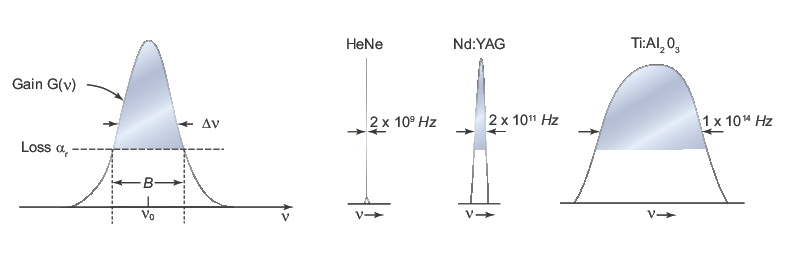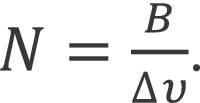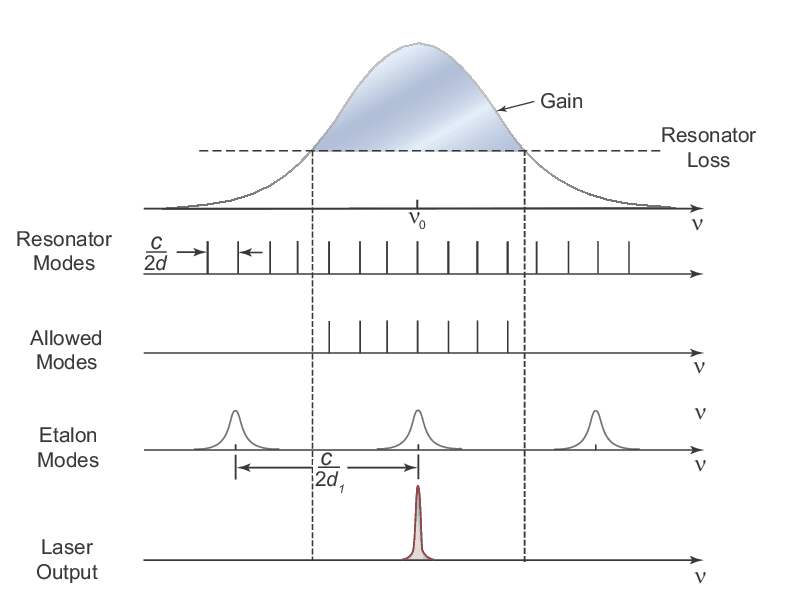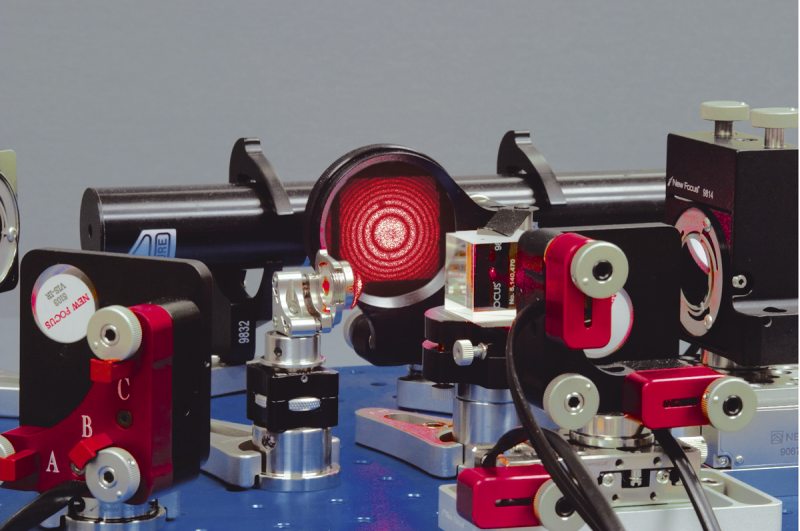The process of coherent amplification imbues laser light with a very unique set of characteristics. Typically, only one or a subset of these characteristics are most critical for a particular application, therefore each will be described separately; however, many of these characteristics are interrelated. While not exhaustive, the most common laser output characteristics include: wavelength, gain bandwidth, monochromaticity, spatial and temporal profiles, collimation, output power, coherence and polarization.
A large portion of the electromagnetic radiation spectrum is covered by a wide range of existing lasers. The wavelength range extends from the ultraviolet (UV) to the mid-infrared (MIR) and does not account for other more exotic systems that provide access from the soft-X-ray spectral region (< 10 nm) to the far-infrared (FIR, > 100 µm). The lasing wavelength (or frequency ν0) is determined by the laser gain medium, which provides the optical transition. The wide range of wavelengths possible is attributable to the large variety of available gain media. Furthermore, nearly all laser wavelengths can be converted or shifted to an alternative wavelength (see Spectral Tunability) and thus can reach from the UV to the MIR spectral region. This spectral agility is the reason laser systems can be employed for short-wavelength applications like lithography for semiconductor processing and long-wavelength applications like material processing and molecular spectroscopy.
The bandwidth of the laser gain medium (B) determines the range of wavelengths over which amplification can occur. This bandwidth is determined primarily by the bandwidth over which spontaneous emission occurs. While various processes contribute to the broadening of the transition linewidth (Δν), several electronic transitions (which are also affected by rotational and vibrational motions) can overlap in frequency, leading to significantly wider bands, particularly for molecular or solid-state systems. Typical bandwidths for select gain media are shown on the right side of Figure 1. Gas lasers, like the HeNe laser, typically have very narrow bandwidths on the order of 1 GHz owing to their atomic transitions. Conversely, solid-state lasers, such as the Ti:Al2O3 (sometimes referred to as Ti:Sapphire or Ti:Saph) laser, can have extremely wide bandwidths exceeding 100 THz. The gain bandwidth is also dictated by the total loss in the system (αr) since a net gain is required for lasing (see Figure 1, left). Consequently, the actual gain bandwidth may be different than the spontaneous emission bandwidth. For instance, modulating the intracavity loss is a means for achieving laser wavelength tuning (see Spectral Tunability). Furthermore, the gain bandwidth is not necessarily the same as the bandwidth of the exiting laser beam since that will also depend on the laser resonator as discussed below.
 Over 8,000 products in-stock! & FREE 2-Day shipping on all web orders!* Learn More FREE T-Shirt with orders $250+ Details
Over 8,000 products in-stock! & FREE 2-Day shipping on all web orders!* Learn More FREE T-Shirt with orders $250+ Details






 Ultra-High Velocity
Ultra-High Velocity